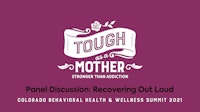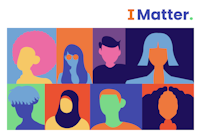
Connecting families to mental wellness care and a supportive community so that parents and children can connect in healthier ways with each other.
An Interview with Marisa A. Gullicksrud, LCSW, Program Director, Child First®
When young children grow up in environments where there is violence, neglect, mental illness, or substance abuse, the stress can be toxic to their development. Child First® works to intervene and prevent this damage. As a national, evidence-based, two-generation model, Child First works with very challenged young children and families to provide intensive, mental-health home-visiting services and to connect families to needed community-based services. Their goal is to decrease the stress and build strong, loving, parent-child relationships that protect and heal the brains of these children.
Marisa A. Gullicksrud, LCSW, Program Director at Child First, says that one of the things that makes the program so unique—and so valuable to providers—is that a referral can be made on behalf of the child or the parent. “A provider may refer because they see a child under six years old who has some kind of social, emotional or behavioral disorder, a development or learning delay, or if they are in environments that pose a risk to their health and wellbeing,” Marisa explained. “But with Child First, even if those things don't exist, providers can also refer a family to us if the caregiver has experienced their own mental health, substance use, legal, relational or socio-economic issues that they think will impact their relationship with their child. That means they can engage with us even before the caregiver’s issues have impacted their relationship with their child, including during pregnancy.”
Child First focuses on creating healthy relationships between parents and their children. “We really work to disrupt those generational cycles of substance use, poverty, abuse and neglect, and we do that through the Child and Parent Psychotherapy intervention,” Marisa said. “The goal of this type of psychotherapy is to heal the parent wound to make the parent available to connect with and attach to their child. We are often working to identify the parent's own trauma experiences and ensure that they don't show up in their relationship with their young children.”
Child First says that 96% of the parents they work with have had their own traumatic event, and approximately 85% of children they work with have had a traumatic event. “We help these families connect to a whole list of services they need,” Marisa explained. “Since the family is not only assigned a clinician but also works with a family support partner, we are able to do a lot of coordination towards stabilizing the family unit, as well as expanding the parent's executive functioning and teaching them how to play and engage in learning activities. These efforts support the therapeutic work that the clinician is doing. Data shows that when families have stable housing, stable food and income, they are 39% less likely to be involved in social services or child welfare.”
Marisa also emphasized the importance of connecting with other providers. As an example, she said that substance use providers work on triggers and coping with recovery, while Child First providers focus on how trauma is impacting the parent’s relationship with their child. Both are working on trauma-based care for this family and come at it from two different angles, so collaboration is key. Ideally, the Child First team (mental health clinician and family support partner) helps other providers by allowing them to concentrate specifically on their area of expertise instead of also trying to juggle other family needs. It is the ultimate example of connecting and working together to give these families the most well-rounded approach to mental wellness, positive parenting and more successful futures for all members of the family.
Download their fact sheet.
Join us for Child First Zoom 101
Friday, December 10, 2021
12:30-1:30 pm
Child First is accepting applications for Cohort two. If you are interested in having Child First in your agency or community, our Zoom 101 meeting is a great introduction to what is available and how it could work for you.
Want to make a referral?
Providers have two ways to refer to these services. The first is through a Child First affiliate site in your geographic area. Currently, those sites include Aurora Mental Health, which serves the city of Aurora and Arapahoe, Adams and Douglas County; Savio House that serves Adams County; and a south team that serves El Paso County. It also includes the Tennyson Center that serves Jefferson, Boulder and Broomfield County, and the San Luis Valley Behavioral Health Group that serves all six counties of the San Luis Valley.
The second way is that any provider statewide can refer through Invest in Kids. Providers can use an online referral form and do not have to identify with a specific geographic area. They can simply upload their client’s name and their children’s names, the provider’s concerns and request for services for that family. Then, a nurse coordinator will reach out to the referring provider and link them with the affiliate site that should serve that family.
Share this article:








